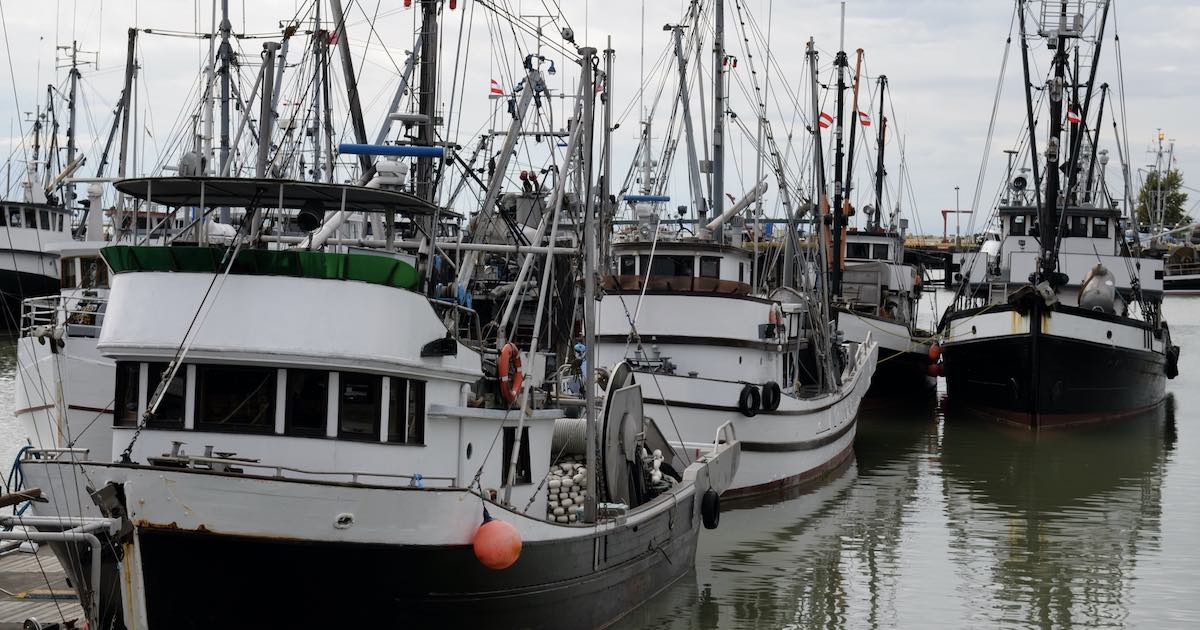
This morning DFO announced drastic changes for BC’s commercial salmon fishery. DFO representatives Sue Grant, Sarah Murdoch and Neil Davis presented the vision for commercial salmon fisheries for this year and into the future. According to Grant BC salmon are facing unprecedented challenges of which Climate Change and its impact on freshwater and ocean salmon survivals is the “overarching factor”.
Today’s announcement focused on Harvest Transformation, one of the four pillars of the Pacific Salmon Strategy Initiative that Fisheries Minister Jordan announced earlier in June. What does “harvest transformation to modernize and stabilize commercial salmon fisheries” look like? Today we found out, and so did most of the commercial salmon fleet.
Neil Davis, DFO
In responding to a question about whether the commercial fisheries were aware of the contents of the announcement Neil Davis answered that there where “conversations” with commercial fishermen, but the exact details were only released today.
Here are the nuts and bolts: The plan for the commercial fishery is to develop a comprehensive, long term holistic approach for the fishery. However, current regulations do not provide enough protection for stocks of concern which now include sockeye, coho and Chinook while chum and pink have been showing mixed escapement results over the last few years. Consequently for the 2021 fishing season, there will be substantial reductions in harvest opportunities spread across all commercial fishing gear—types and affecting every commercial salmon fishery on the coast including those that take place in northern BC’s Transboundary Rivers. There are currently 138 separate commercial fisheries in BC of which only 59 will have fisheries in 2021. This represents an average harvest reduction of 57%. Gillnet fisheries will be hit the hardest, followed by seine and then troll. Cuts will also occur in commercial communal fisheries, but 1st Nation food, societal and ceremonial fisheries will not be affected.
The plan is for a leaner, more efficient and profitable fishery to come out the other end. The Fisheries Department claims that many salmon licenses have not been used in recent years as indicated by no record of any catch, many license holders are near or even past normal retirement age and that commercial fishermen have indicated a willingness to get out of the fishery for fair compensation. Consequently there will be a new volunteer retirement program developed that will establish compensation at fair market value. But as troller Dane Orser notes “the devil is in the details”. This retirement process begins in 2022. This is not the first license buy-back on the west coast. Both the Davis and Mifflin Plans were brought in during the latter half of the 20th century to rationalize the fleet, reduce fishing capacity and aid stock rebuilding.
Chris Acheson
While the 2021 fishing plans are set, the details of the retirement program will be developed over the fall and winter months. Until then the 2021 commercial salmon fishery will look much different that it has in previous years. Chris Acheson lives on Saltspring Island.
He’s a salmon troller and he calls the announcement “devastating for everyone”, he also believes the decision “was made for political reasons” and that reports that “there were no discussions with the Area F harvest committee”. He sarcastically remarked “I am surprised they didn’t release the news at 4:45 PM Friday”. Time will tell how this sits with the rest of the commercial salmon industry.
5 Comments
Leave A Comment
Visit the Store
$34.99
$34.99
Featured Catch
Joel Unickow halibut (Photo: Rob Frawley Lucky Strike Sportfishing Tofino)




Shut it ALL down. There should be no special treatment for any group. We all know that any and all fish caught by FirstNations will be sold, thusly shut them down or limit the catch along the lines of the Sport Fishery.
What a pile of bullshit first the buyback has been given to Indians has not reduced the effort secondly conservation is number one why are the Indians allowed to keep fishing most food fish are being sold seals and sea lions are a big problem that is being ignored!!!!
again, DFO dodges the obvious. We can’t rebuild our stocks with 105,000 seals, 48,000 Stellar Sea Lions and 25,000 California Sea Lions hunting 24/7. The total of all fishes consumed by pinnipeds is 440,000 metric tonnes. that is overe 8000 fully loaded seine boats.
While putting the salmon first, is what is necessary to successfully rebuild a renewable resource.
This press release will probably not do one iota for the resource. It is more likely a scam by DFO, to transfer what resource is left to preferred political groups. (ie. Lodges, game fishermen, and First Nations)
Many of the public have become convinced that the cause of this precipitous decline in salmon is over-fishing. Not true. Nobody goes fishing until DFO opens a season for harvesting.
Nope, the real problem is, and has been DFO itself. Don’t expect them to take any responsibility. The Queen admits no wrong.
The facts are quite simple. The multi-decade decline in salmon resources happened while DFO was in complete control of the salmon fishery.
Now DFO wants to be in charge of rebuilding it. Well if DFO had that talent, why did they not get started ten years ago before it became a crisis.
The Chinook salmon in many cases, are on the verge of extinction. You see any restrictions on the lodges at Langara Island?
Nope. If DFO was really concerned with salmon they would seriously restrict and enforced closures on Chinook. That would put more Chinooks on the spawning grounds, which is the only way to increase Chinooks.
Global warming is not the problem.
DFO is.
as usual the government has no clue get the seine boats off the water buy them back……